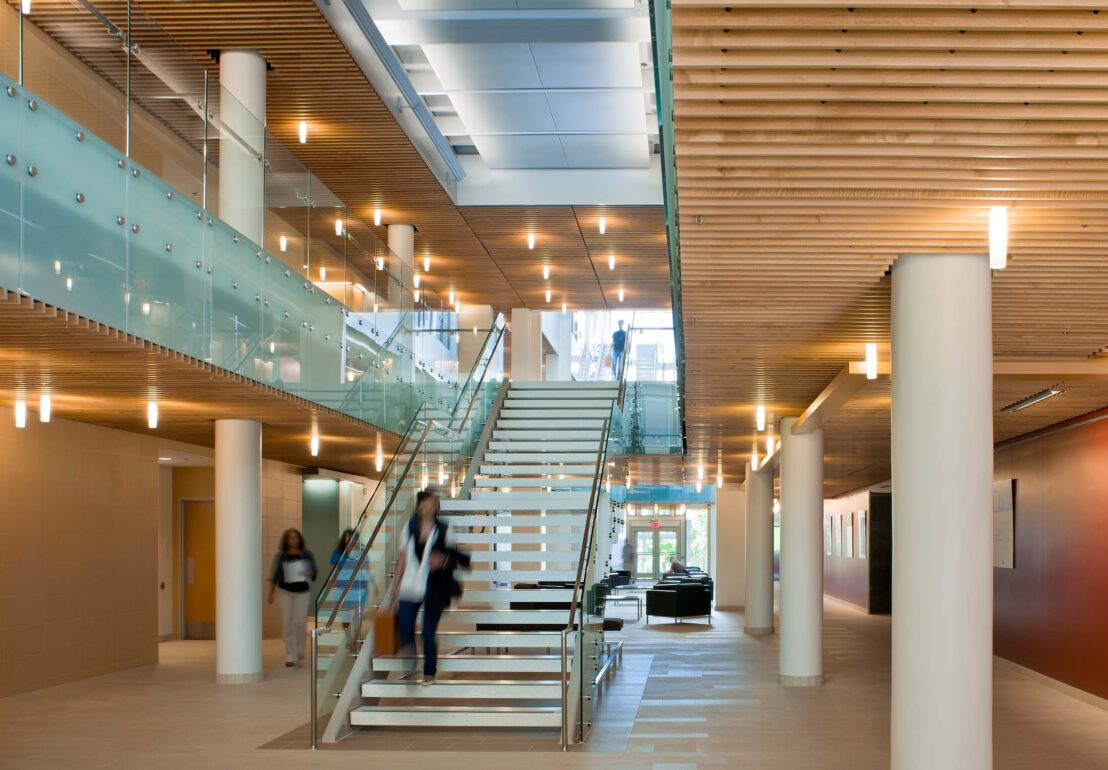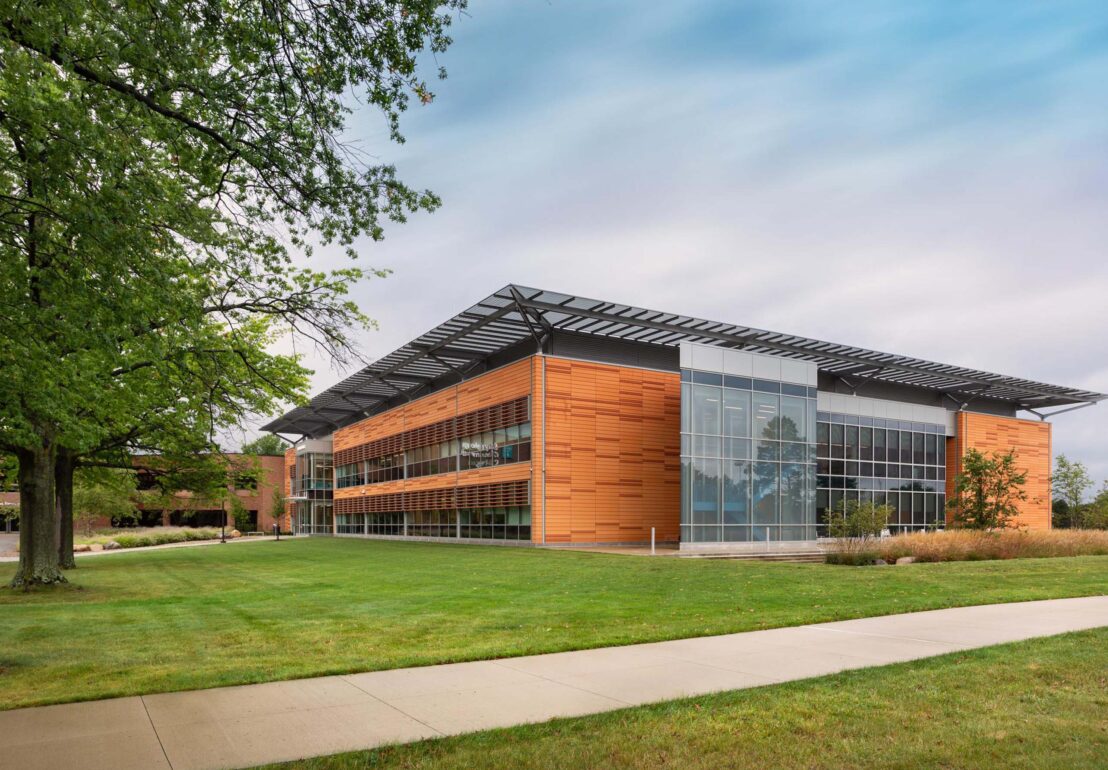Designing for environmental health
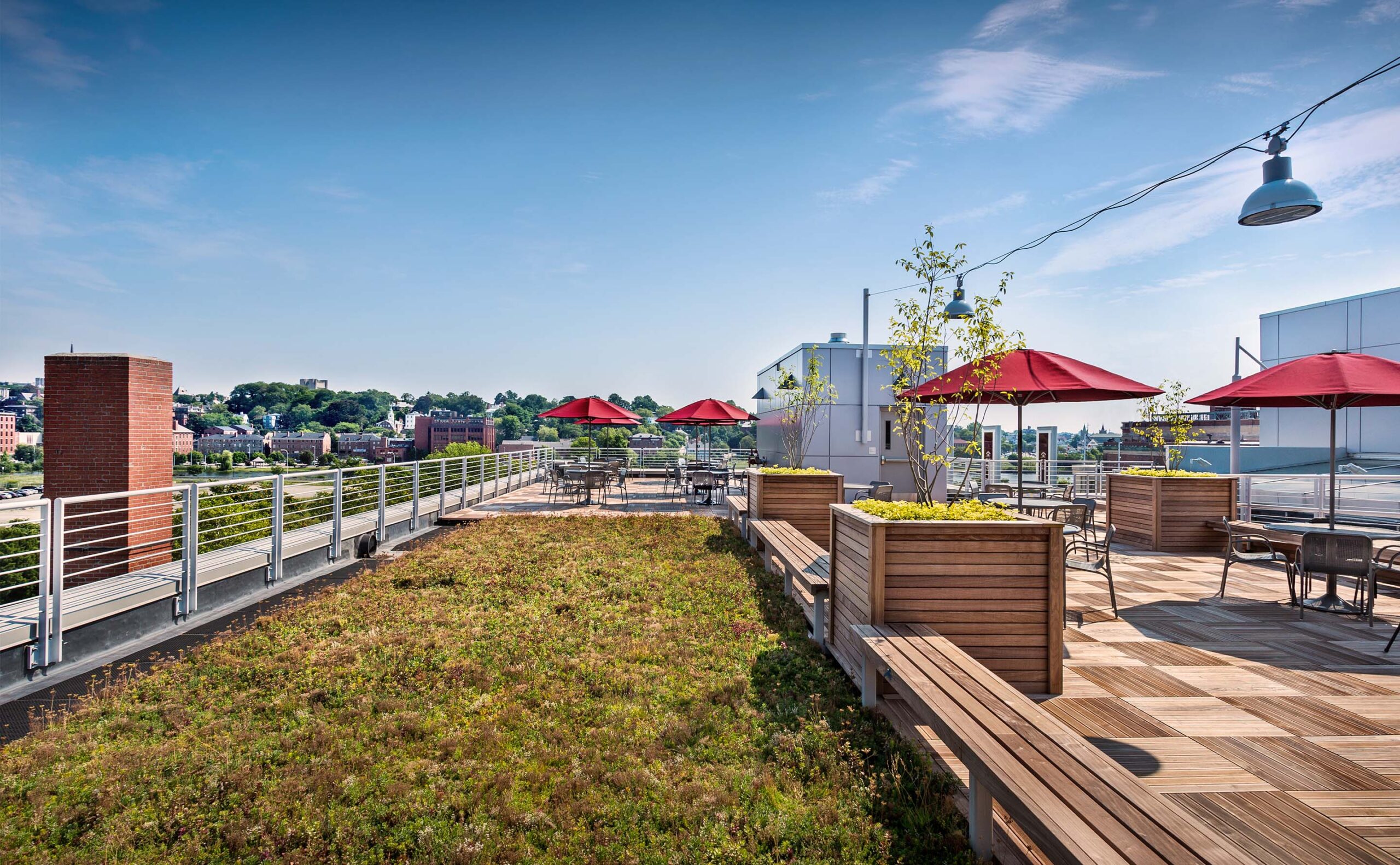
Brown University, Warren Alpert Medical School Building
All buildings necessarily influence the environmental health of their immediate site, and/or neighboring structures. Clearly, it is essential that a new building, addition, or renovation does not degrade its surrounding environment. Ideally, a new project will actually improve or remediate degraded environmental conditions; while at the the very least introduce no new physical harms.
Consequently, we acknowledge that there are imperative and comprehensive measures that must be incorporated into the design and subsequent operation of any project to ensure the responsible and sustainable environmental health of any building site and its surroundings. Among other things, we prioritize innovative stormwater management strategies; include a high percentage of pervious surfaces for vehicular traffic, parking, and pedestrian pathways; incorporate constructed wetland landscaping features; and recommend mow-less native glasses in lieu of traditional lawns.
Innovative stormwater management strategies reduce stormwater runoff and when possible, divert a practical percentage for gray water reuse to supply water for irrigation and/or flushing fixtures. Our renovation of a 1928 factory building for the new home of Brown University’s Warren Alpert Medical School included the installation of a green roof and outdoor patio (shown in the image at the start of this section). The green roof reduces the flow of stormwater and reduces building energy use, and the patio provides valuable outdoor space for the Medical School. The reuse of an existing building is itself an important aspect of environmental health, eliminating the larger amounts of carbon and energy associated with new construction.
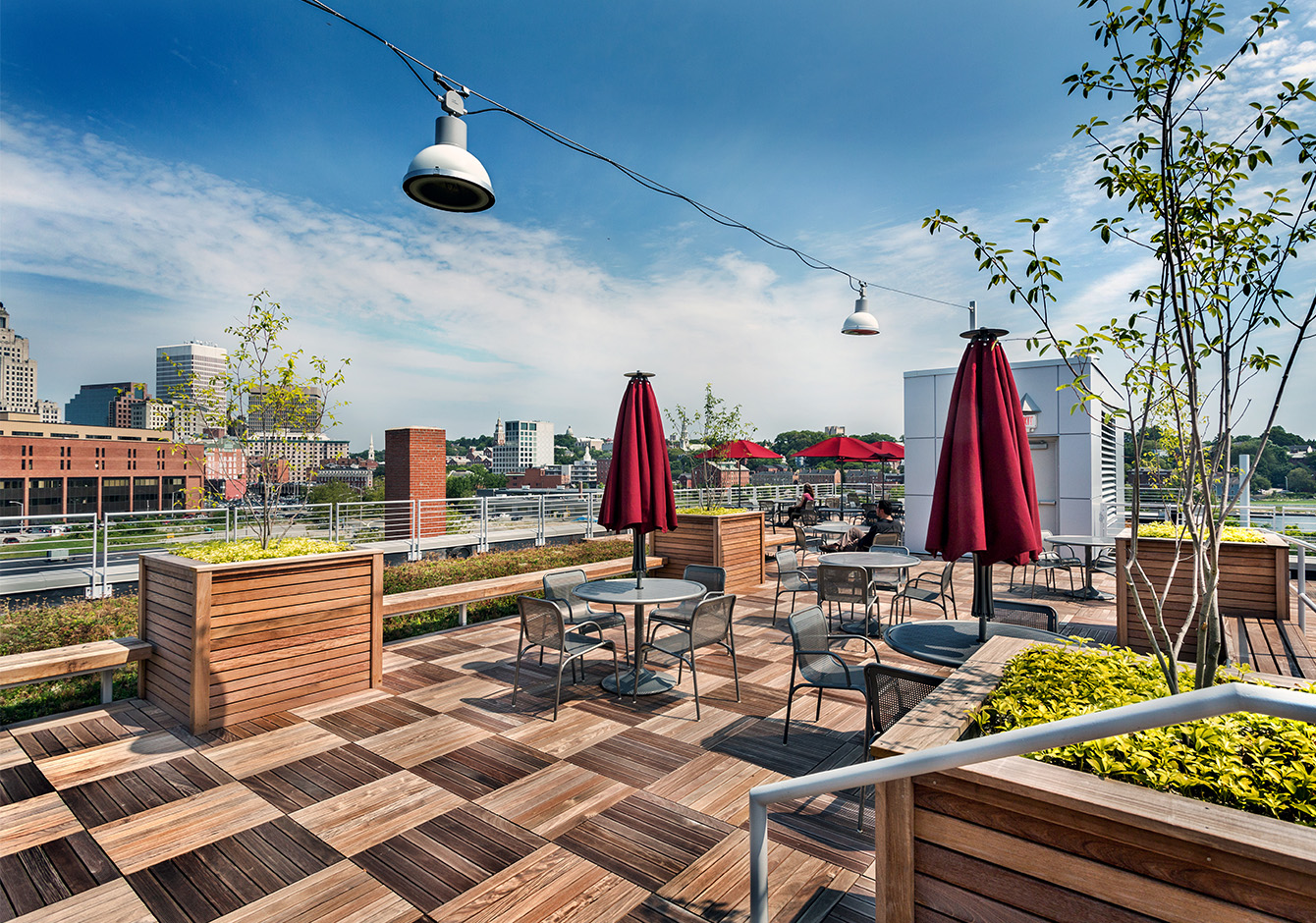
Brown University, Warren Alpert Medical School Building
For Cuyahoga Community College’s STEM Center in Parma, Ohio, rather than diverting stormwater to underground holding tanks connected to the campus stormwater system, we designed a constructed wetland/outdoor teaching amphitheater capable of holding 11,000 cubic feet of a 100-year storm surge. While the pool fills, the pervious gravel and soil base permits a natural and gradual groundwater recharging. For a few days after a storm event, the constructed wetland becomes a reflecting pool. The landscaping materials include Haydite gravel, flood-tolerant ornamental grasses, and trees.
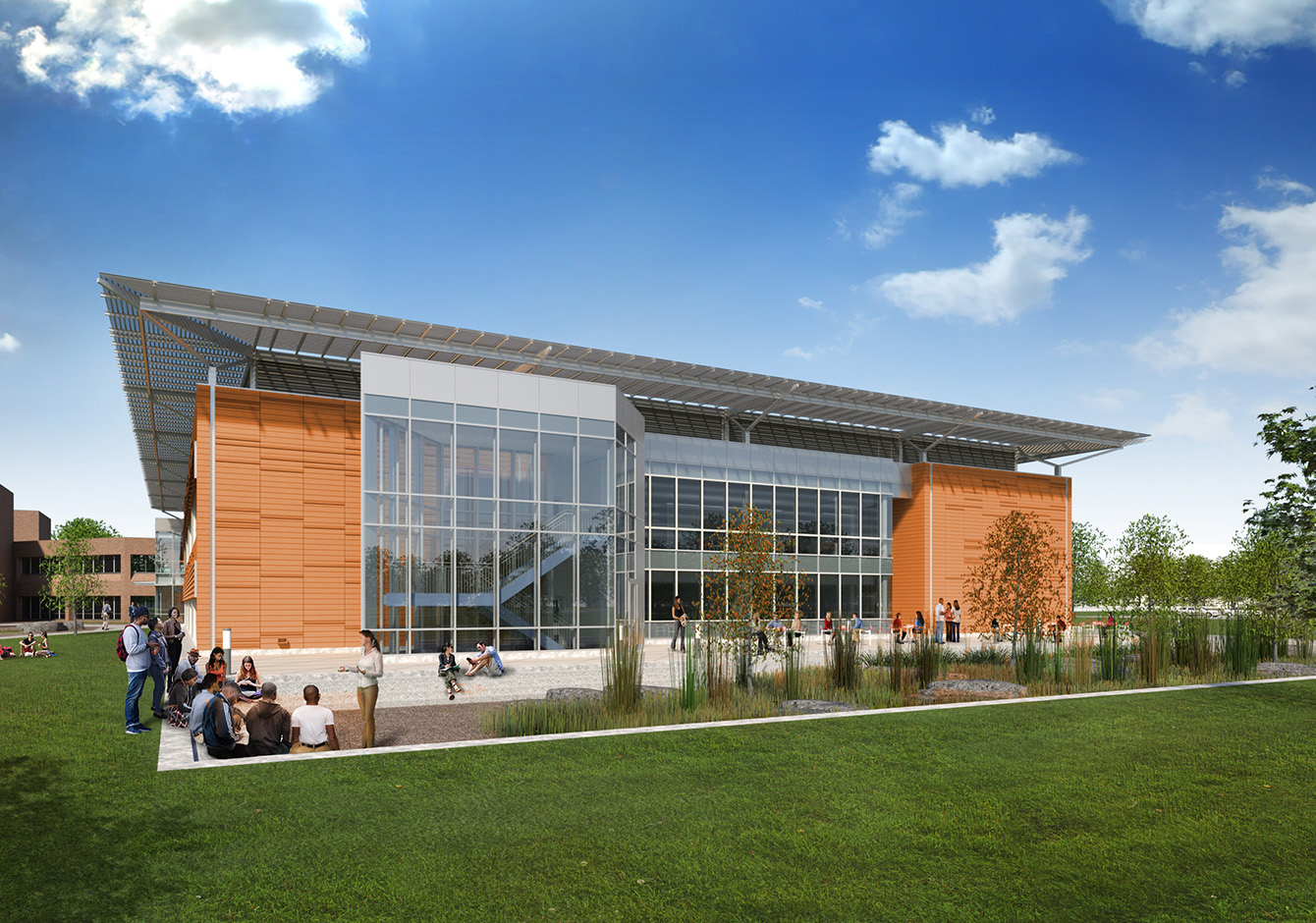
Prior to a storm event
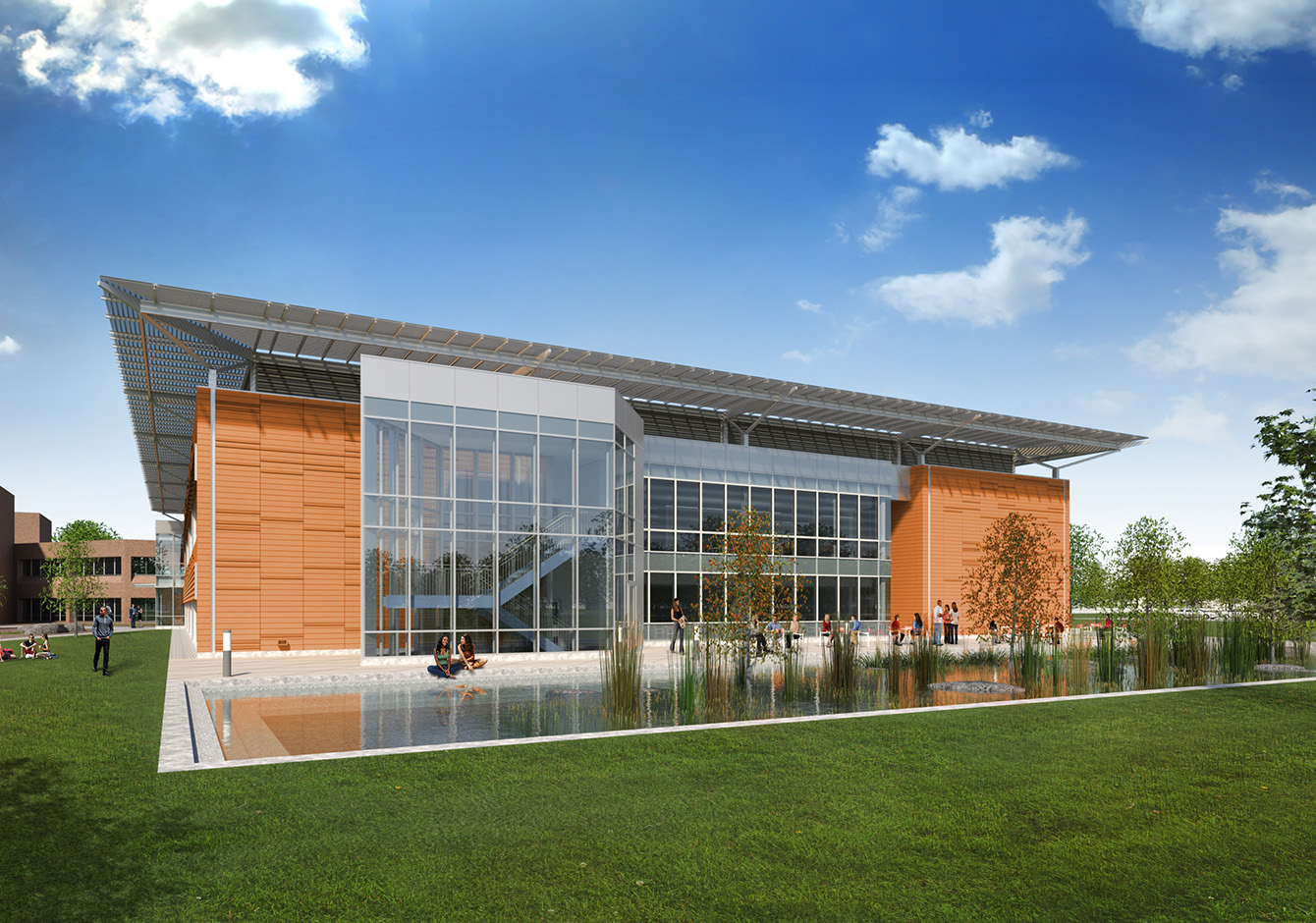
Following a storm event
In designing the research building for the University of Massachusetts Dartmouth’s School for Marine Science and Technology, located in New Bedford on the hurricane-prone Massachusetts coast, we employed pervious paving, constructed wetland bio-swales, and located native plantings throughout the site to increase natural surface water absorption.
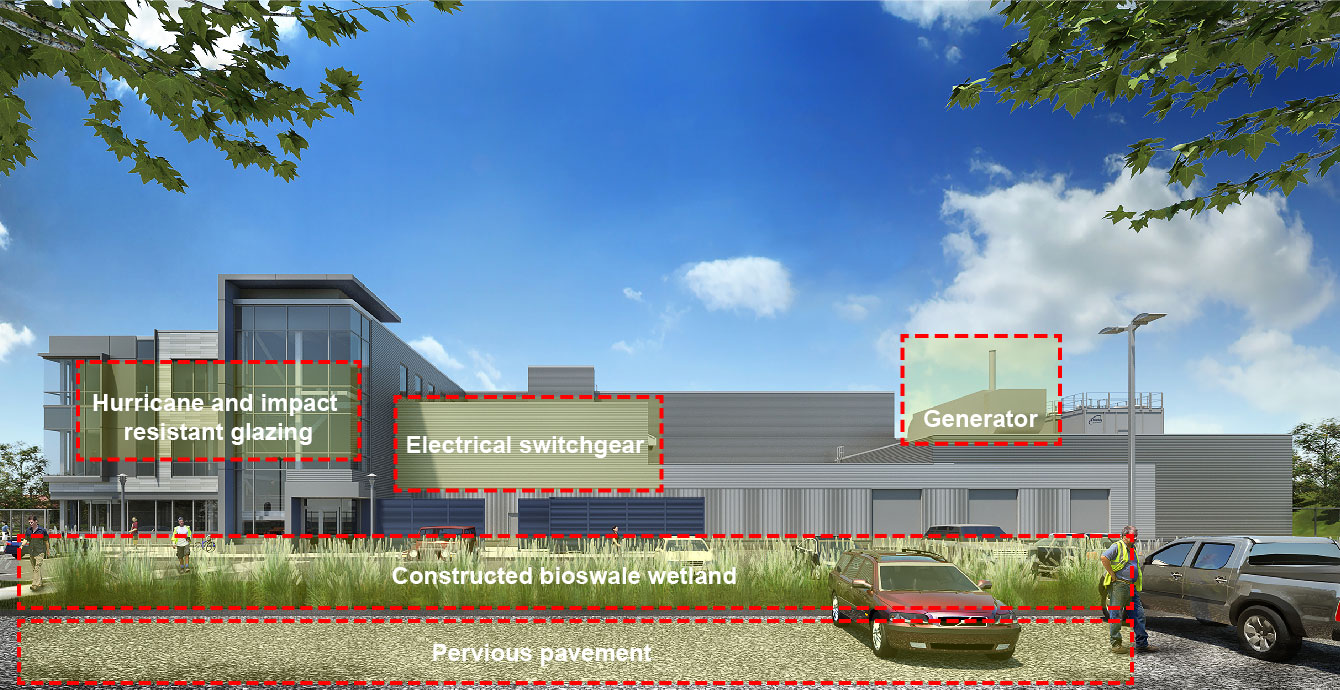
Constructed wetland bioswale and pervious parking surface
At the Recovery Center and Hospital in Worcester, Massachusetts, extensive use of mow-less native grasses dominate the surrounding grounds of this facility. The landscape virtually eliminates fertilizer, pesticide use, and irrigation. As a result, the surrounding grounds provide a sustainable and diverse environment for pollinators, birds, and native fauna.
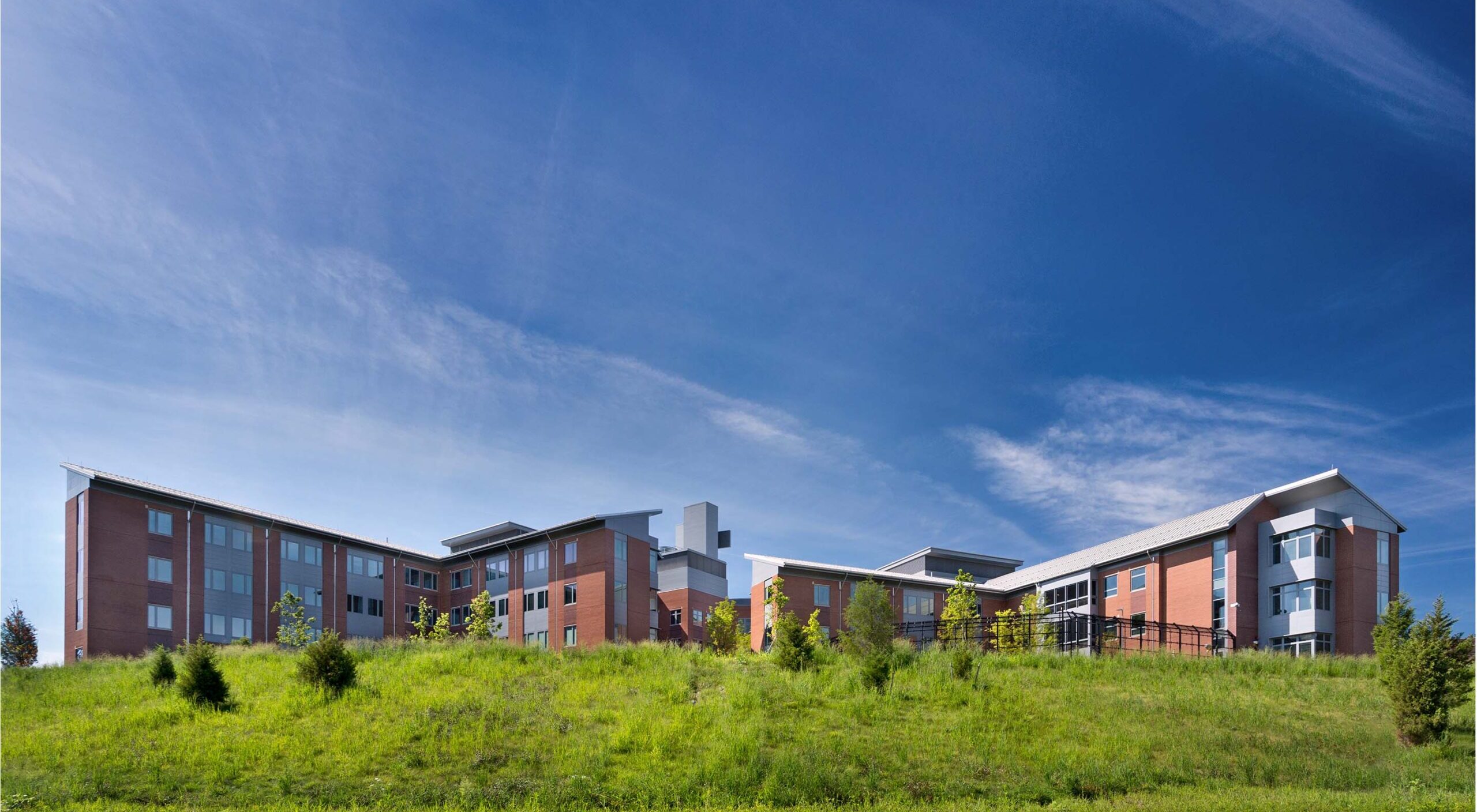
The Commonwealth of Massachusetts, Worcester Recovery Center and Hospital
